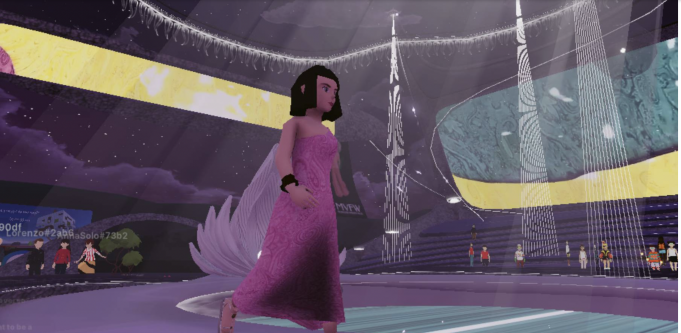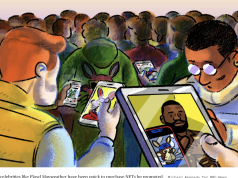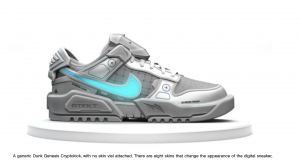By Marc Bain
Let’s just say it out loud: most virtual fashion doesn’t look very good.
The shortcomings were on full display at the first-ever Metaverse Fashion Week, which took place from March 23 to 27 in Decentraland, a blockchain-based 3D virtual world. Brands and retailers including Dolce & Gabbana, Etro, Tommy Hilfiger and Selfridges took part with virtual runway shows featuring digital clothes and pop-up shops offering NFTs.
The clothing presented suffered from lo-fi visuals, reminiscent of video games from decades past. Etro’s vibrant prints, for example, became muted, indistinct swirls. Cut and fit were rendered irrelevant. Fabrics, or their digital proxies anyway, all looked the same.
It was not an ideal showcase for an industry that sells image.
Due to technical limits, photorealism isn’t yet an option for worlds like Decentraland, so they have leaned into a deliberately stylised look that is supposed to be cartoonish and fun but doesn’t favour brands seeking to project sophistication or sex appeal.
But as engagement with digital assets hits an inflection point, signalling promise ahead, fashion brands face a dilemma: test the waters or wait and see?
It seems increasingly likely that virtual worlds will become an important channel for connecting with the next generation of customers. In a nationally representative survey of US Gen-Z to Gen-X consumers (aged 15 to 56) conducted by BoF Insights, 72 percent said they had spent time in a virtual space over the last 12 months. Gaming was the most popular entry point. A similar share said their digital identity was important to them.
So it’s understandable that fashion brands are eager to start experimenting. The associated costs are low and many fashion companies want to avoid the kind of conservative thinking that slowed their embrace of e-commerce and social media.
If brands are going to experiment, now is arguably the time to test and learn, when fewer users will see their stumbles. But nobody wants to look bad, even to a small audience, least of all carefully cultivated fashion brands.
Fashion brands get tripped up most when they try to replicate the real world digitally. At Metaverse Fashion Week, the runway shows were far less interesting and well-executed than real shows. The pop-up shops that mimicked brick-and-mortar stores were dull.
By contrast, the best virtual fashion experiences often focus on engaging experiences, not mimicking the real world. The “garden” of different themed rooms Gucci created last year in Roblox — a platform that also features basic graphics — was strange and magical. The skate park Vans built in Roblox was addictively fun to cruise around.
Technology is always clunky to start. Online 3D virtual worlds, NFTs and other innovations will either go mainstream and become a key part of a fashion brand’s playbook, or they won’t. And there are merits to both early experimentation and a more cautious approach.
Ultimately, each brand will have to make its own calculus rooted in its own identity and objectives. But whatever you do, don’t just jump on a bandwagon. Technology is just a tool, not an end in itself.









